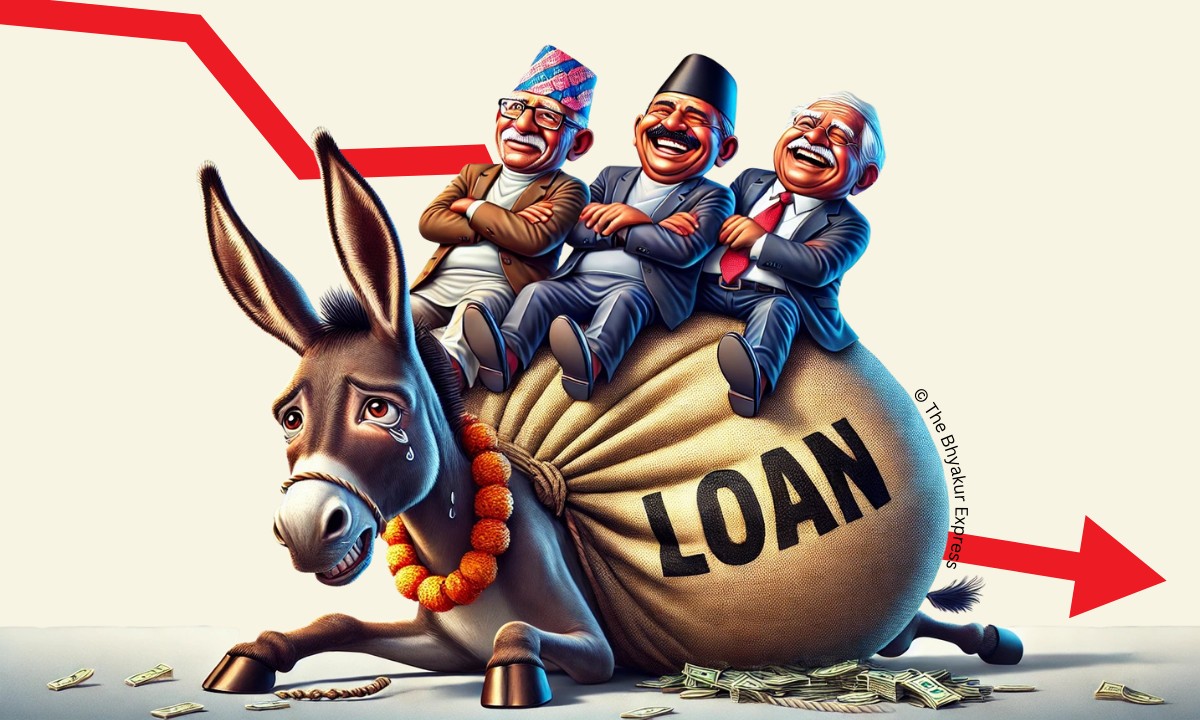KATHMANDU: Nepal’s public debt has increased past 45 percent of the country’s Gross Domestic Product (GDP), raising concerns over the nation’s financial sustainability and economic future.
A recent report from the Public Debt Management Office reveals that the total government debt has reached a staggering Rs 2.611 trillion as of February 12 in the current fiscal year (2024/25). This marks an alarming increase of Rs 176 billion since the beginning of the fiscal year, when public debt was at Rs 2.434 trillion. With the latest figures, Nepal’s public debt now accounts for 45.77 percent of GDP.
A closer breakdown of the debt structure highlights a nearly equal division between internal and external borrowings. Of the total debt, 50.87 percentRs 1.328 trillionis owed to external lenders, while 49.13 percentRs 1.282 trillioncomes from domestic sources. This balance of internal and external liabilities underscores the government’s dual approach to financing its expenditures.
One significant factor exacerbating Nepal’s debt burden is the depreciation of the Nepali rupee against the US dollar. The report highlights that currency fluctuations alone have added Rs 36.59 billion to the nation’s financial liabilities, further straining the economy.
Despite setting a goal of raising Rs 547 billion in public debt this fiscal year, the government has so far mobilized Rs 290.57 billionjust 53.12 percent of the target. Of this, Rs 229.15 billion has been secured through domestic borrowing, covering 69 percent of the domestic loan target. Meanwhile, external loans amount to only Rs 61.42 billion, meeting just 28.31 percent of the planned target.
Debt repayment remains a significant fiscal challenge, with the government allocating Rs 402.85 billion for principal and interest payments. So far, Rs 178.75 billion has been spent on debt servicing in the past seven months, accounting for 3.31 percent of GDP.
The rising public debt sparks concerns over Nepal’s economic health, as higher borrowing could lead to greater financial vulnerability in the future. Experts warn that without strategic debt management, increased reliance on loans could strain national resources, limiting investments in critical sectors like infrastructure, education, and healthcare. Additionally, growing debt servicing obligations could restrict the government’s fiscal flexibility, making it harder to address economic shocks and development priorities.
As Nepal navigates its financial landscape, balancing debt sustainability with economic growth remains a crucial challenge. Policymakers now face pressing questions: Can Nepal generate enough revenue to manage its debt burden effectively? And how will the government ensure that borrowed funds contribute to long-term economic stability rather than short-term fixes?
With mounting public debt and an uncertain economic outlook, the road ahead demands careful financial planning, responsible borrowing, and effective utilization of resources to prevent further economic strain on the nation and its people.

